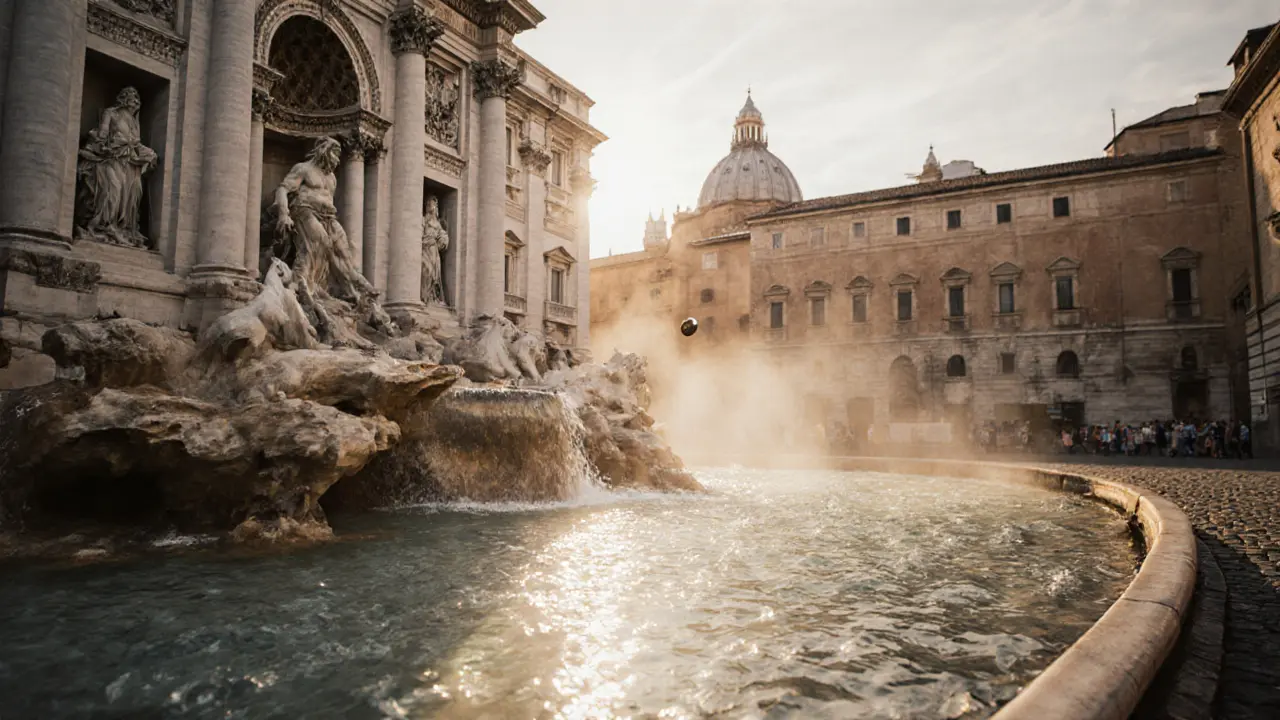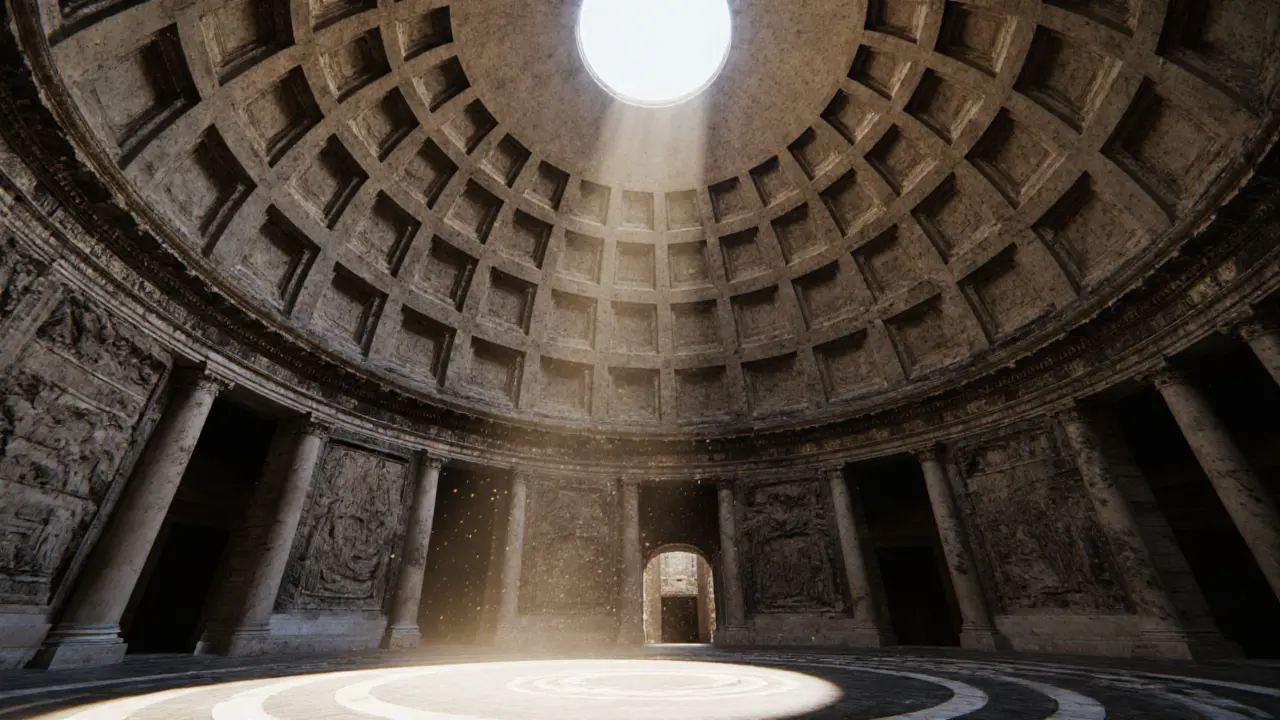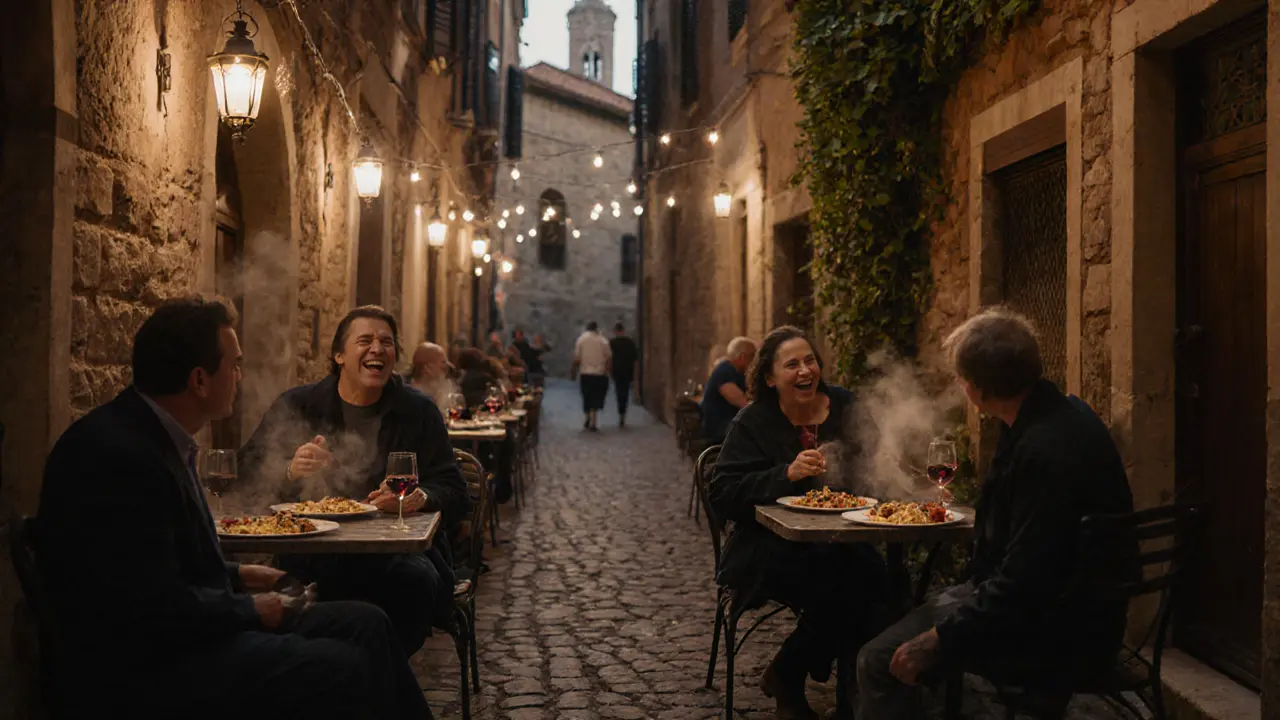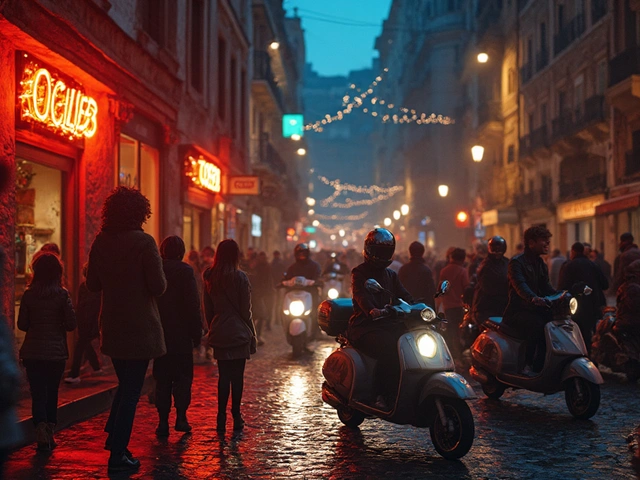
Walk through Rome and you’ll feel it-the weight of history, the whisper of ancient gods, the smell of fresh espresso and warm bread. This isn’t just a city. It’s a living museum where every corner holds a story older than most countries. You don’t need to be a history buff to feel it. You just need to show up.
Colosseum: Where Empires Were Made and Broken
The Colosseum isn’t just an old amphitheater. It’s the reason we still talk about spectacle today. Built in 80 AD, it held 50,000 spectators who cheered for gladiators, wild animal hunts, and even mock sea battles. Today, you can walk the same tunnels where fighters waited for their moment. The upper tiers still offer views that haven’t changed in 2,000 years-across the Roman Forum, past the Arch of Constantine, toward the Palatine Hill. Buy tickets online ahead of time. Lines stretch for hours in summer, and the heat doesn’t care how patient you are.
Vatican City: A Kingdom Within a City
Inside Rome, there’s a country smaller than Central Park. Vatican City is home to the Pope, the Swiss Guard, and the Sistine Chapel. Don’t rush the Sistine Chapel. Stand under Michelangelo’s ceiling for at least five minutes. Look at the way God’s finger nearly touches Adam’s. Notice the hidden details-the brain shape behind God’s robes, the 12 prophets lining the walls. The Vatican Museums are massive. Skip the long lines by booking a timed entry. Go early. The crowds thin out by 10 a.m., and the light through the windows makes the frescoes glow.
Roman Forum: The Heartbeat of Ancient Power
Right next to the Colosseum, the Roman Forum is where politics, religion, and commerce collided in ancient times. Walk along the Sacred Way, where emperors paraded after victories. Stand where Julius Caesar’s funeral was held. See the Temple of Saturn, the Vestal Virgins’ house, and the Rostra-where speeches changed the fate of empires. Most visitors skip this place because it looks like piles of stones. But if you read the plaques, or better yet, hire a local guide for 20 euros, you’ll see how the ruins come alive. This was the center of the world once. Now, it’s just quiet. And that’s what makes it powerful.
Trevi Fountain: Throw a Coin, Make a Wish
The Trevi Fountain is the largest Baroque fountain in Rome. Water cascades over statues of Oceanus, Neptune, and Tritons. It’s dazzling at night when the lights hit the marble. But here’s the truth: the crowd here is insane. Tour buses drop people off like ants. To avoid the chaos, go at sunrise. Around 6:30 a.m., the square is empty except for a few locals buying pastries. That’s when you can stand in front of the fountain without someone’s selfie stick poking your eye. And yes, throw a coin over your shoulder with your right hand. Legend says it guarantees a return to Rome. Millions do it every year. The coins fund charity projects in the city. So you’re not just making a wish-you’re helping out.

Pantheon: Architecture That Defied Time
Step inside the Pantheon and you’ll understand why Romans called it a temple to all gods. The dome is still the world’s largest unreinforced concrete dome-built in 126 AD. At its center is the oculus, a 27-foot hole in the roof. Rain falls through it. Sunlight moves across the floor like a clock. No windows. No pillars. Just stone, light, and silence. It’s been a church since the 7th century, so you’ll see altars and saints. But the real miracle is the engineering. The concrete used is lighter than modern mixes because they added volcanic rock. That’s why it hasn’t collapsed in 2,000 years. No other building on Earth has lasted this long without modern support.
Spanish Steps and Piazza Navona: Where Rome Breathes
The Spanish Steps aren’t just a staircase. They’re a social stage. Locals sit on the steps to read, flirt, or just watch the world go by. Climb to the top and you’ll find the Trinità dei Monti church. From there, you can see the city stretch out like a painting. Walk down to Piazza Navona-once a Roman stadium, now a playground of fountains and street artists. The Fountain of the Four Rivers by Bernini is a masterpiece. Watch the water dance around the obelisk. In the evening, musicians play near the north end. Order a gelato from Giolitti and sit on the edge of the fountain. No one rushes here. Not even the tourists.
Trastevere: Rome’s Soul After Dark
Most tourists leave Rome by 7 p.m. But the real magic starts when the sun sets. Head to Trastevere, the neighborhood across the Tiber River. Cobblestone streets twist like a maze. Lanterns glow above tiny trattorias. Locals eat pasta at tables squeezed between buildings. Try the cacio e pepe-it’s simple: cheese, pepper, pasta. But done right, it’s perfect. The wine is cheap. The laughter is loud. This isn’t a tourist trap. It’s where Romans live. If you want to feel like you’re part of Rome, not just visiting it, come here after dinner. Sit outside. Stay late. Let the night pull you in.

Testaccio: Eat Like a Roman
For food lovers, Testaccio is the secret. This working-class neighborhood is where Romans go for the best carbonara, fried artichokes, and tripe sandwiches. The old slaughterhouse hill-now covered in pottery shards-is called Monte Testaccio. It’s the largest man-made mound in ancient Rome, made of broken amphorae. Today, it’s home to Mercato Testaccio, a food hall with stalls serving everything from porchetta to gelato. Don’t miss the fried cod at Forno Roscioli. Or the tiramisu at Pasticceria Regoli. This is where Rome eats. No menus in English. No signs saying "tourist friendly." Just real food, made by people who know how.
Appian Way: Walk the Road That Built an Empire
Leave the crowds behind. Take a bus or bike to the Appian Way-the oldest paved road in Europe. Built in 312 BC, it stretched from Rome to Brindisi. Now, it’s a quiet country lane lined with olive trees, crumbling tombs, and ancient aqueducts. You’ll pass the Tomb of Cecilia Metella, a massive stone cylinder that once held a noblewoman’s ashes. Cicero walked here. Spartacus’s followers were crucified along this road. Today, you can walk or bike for miles without seeing another person. It’s peaceful. It’s humbling. And it’s the best way to remember that Rome wasn’t built in a day-it was built over centuries, one stone at a time.
When to Go and How to Move
Rome is hot in July and August. Crowds are thick. Winter is quiet, but some sites close early. The best times are April-June and September-October. The weather is mild, the light is golden, and the lines are shorter. Don’t rent a car. Parking is a nightmare. Use the metro for long trips. Walk everywhere else. Rome is designed for feet. Buy a Roma Pass if you plan to visit three or more major sites. It gives you free public transport and skip-the-line access. But don’t overdo it. Pick five things to see. Spend time at each. Let the city breathe with you.
What’s the one thing I shouldn’t miss in Rome?
The Pantheon. It’s the only ancient Roman building still used exactly as it was built. No repairs, no rebuilds. Just 2,000-year-old concrete holding up the sky. Walk in, look up, and you’ll understand why Romans called it divine.
Can I see the Vatican and Colosseum in one day?
Yes, but it’s rushed. Start early at the Vatican-book a 7:30 a.m. entry. Spend 3 hours there, then take the metro to the Colosseum. Arrive by 1 p.m. to beat the afternoon crush. You’ll have time for the Forum too, but don’t try to do everything. Quality beats quantity.
Is Rome safe for solo travelers?
Yes, but stay alert. Pickpockets target crowded spots like the Colosseum, Trevi Fountain, and metro stations. Keep your bag in front. Don’t flash valuables. Most areas are safe after dark, especially Trastevere and Testaccio. Avoid the area around Termini Station at night.
Do I need to tip in Rome?
No, but it’s polite. Service is included in the bill. If you had great service, leave 1-2 euros or round up the bill. In trattorias, a small tip shows appreciation. In fancy restaurants, leave 5-10% if you’re impressed.
What’s the best gelato in Rome?
Giolitti near the Pantheon has been around since 1900. But locals swear by La Prosciutteria in Testaccio or Fatamorgana in Trastevere. Avoid places with colorful, piled-high gelato. Real gelato is dense, natural-colored, and stored in flat metal tins. Look for signs that say "gelato artigianale."
Don’t just see Rome. Live it. Sit on a bench and watch an old man feed pigeons. Let a stranger recommend a trattoria. Get lost in a back alley. The magic isn’t in the monuments-it’s in the moments between them.



